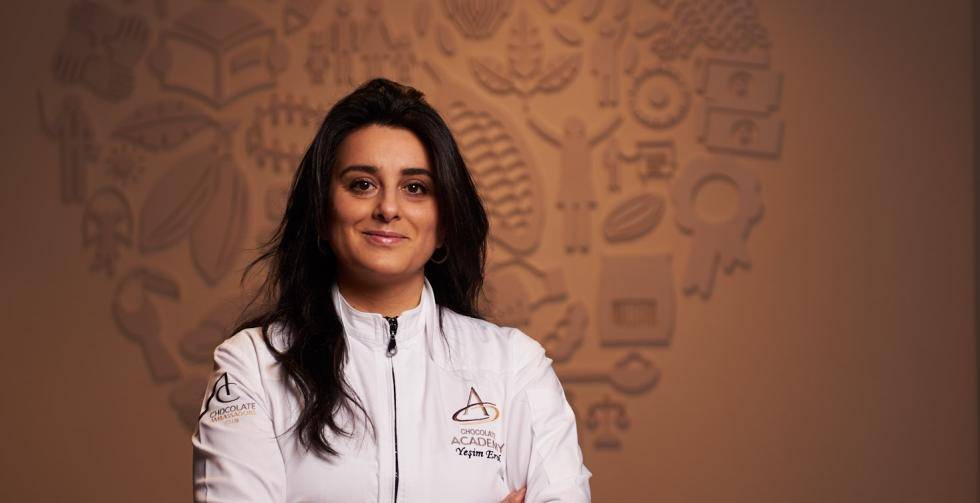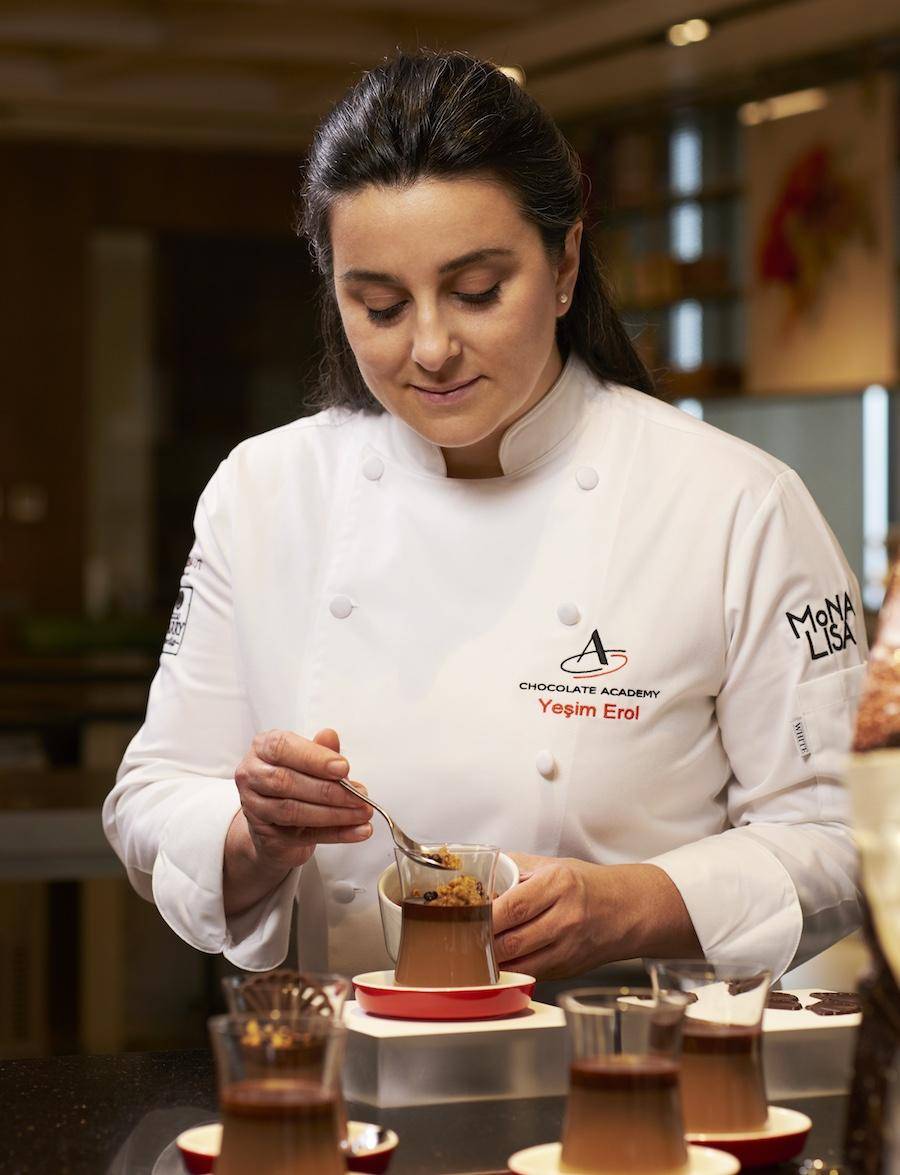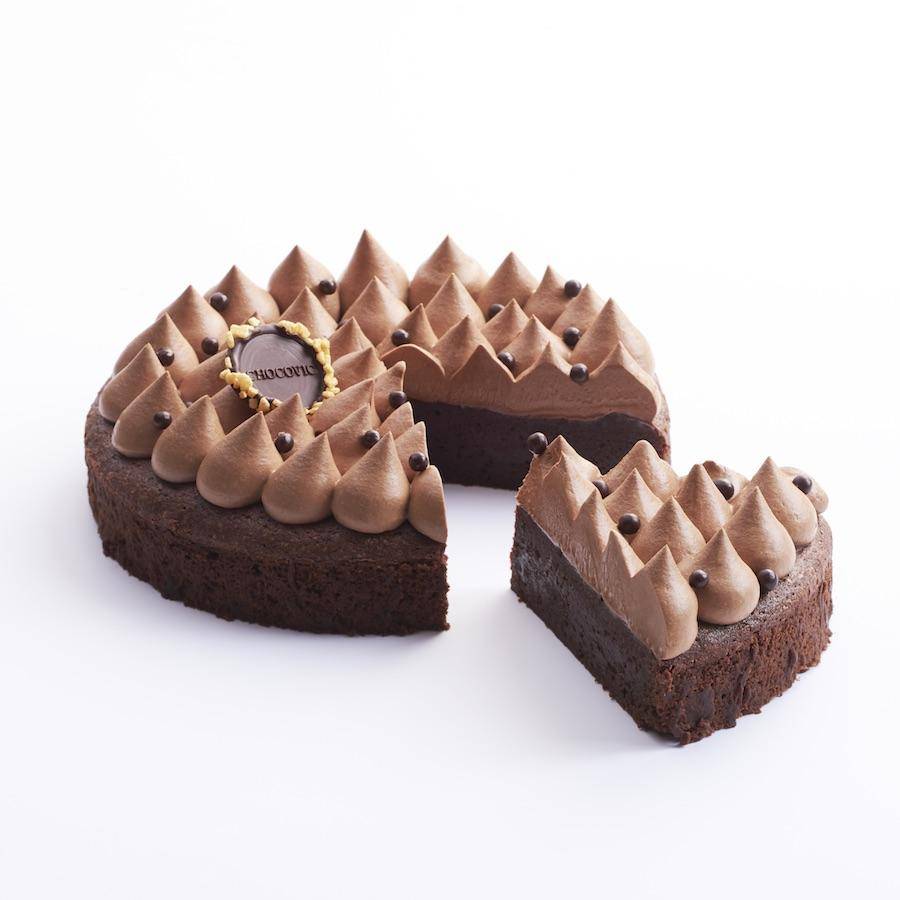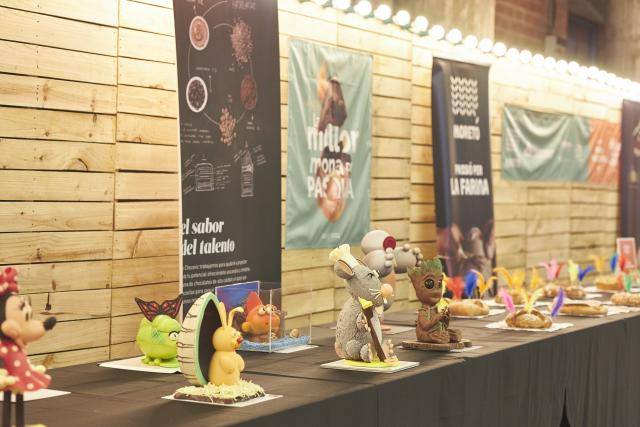Yesim Erol:
passion for chocolate

Yesim Erol:
passion for chocolate
You've got a degree in Philosophy. When did you decide to turn your professional career around and go into patisserie?
For me studying philosophy and then doing what I'm doing was never a surprise. Both at work and in my everyday life I like to offer what I know willingly and as a gift. I consider life and everything I do as a gift. So forme, working with chocolate is like a gift that life has offered me. Studying philosophy was a gift I made to myself. While I studied, I knew I would be working in something related to cooking.
When I remember times from my childhood,
I think I can see that the seeds of my dream had already been sown. I was born and raised in Ordu, a little town on the Black Sea. Sagra, one of Turkey's first chocolate factories, was based there. My father was the person in charge of approving the factory products in the laboratory. So he received samples and we all used to try a lot of different chocolates. I still have memories of my experience in terms of its smell, texture and ingredients and my curiosity for concepts like product and raw material because of my father's profession.
On the other hand, I was a quiet, introverted child. I remember finding the kitchen to be a place where I could stand out. Because in our house the kitchen has always been the most important place. Meals were prepared with great care and the main ingredients used in the kitchen were made by my parents. I think all this prompted me to explore cooking. I started to spend my time there, trying to impress my family. As a result, I found an area where I could shine and express myself.
The kitchen was where I learned what I wan- ted to and develop my character. Cooking has its a mathematics and its own flow and I've learned that you have to abide by its rules. Cooking has taught me to adapt and be disci- plined, to define and know with precision.

The kitchen was where I learned what I wanted and shaped my character. Cooking has its a mathematics and its own flow and I've learned that you have to abide by its rules.
What has your professional career been like before you got here?
In the United States I first studied food and drink management, and after doing an inter- nship in various departments, I decided to go into the world of patisserie and study at the French Pastry School. After graduating, I had the chance to work in the Chicago Sofitel and that was where it all started.
After returning to my native country, over the last 15 years I've worked as a pastry and chocolate chef and as a manager in various patisserie chains and companies in the food and drink sector.
I've had the opportunity of working on development and launch projects. I believe in continuous training to stay up-to-date with trends in our sector and learn new tech- niques and applications. That's why I've had ongoing training in this field since 2005. I've continued to add new training courses to my education from many continuing professional development training schools and private institutions in Europe.
All the brands and kitchens I worked with have helped me to see the general panorama of the world we live in and to stay well-con- nected. Lastly, I started working as a chef at the Chocolate Academy Istanbul and I've been doing my work with great pleasure and passion for the last two and a half years.
What kind of patisserie do you most enjoy or identify the most with?
I can say that my work is based on progres- sing towards making new combinations and pairings of traditional and classic recipes, focusing my attention on using local ingre- dients. The change I can see simple ingre- dients go through when we apply techniques hasa sparked my curiosity and my passion. That's why I always start with what's simple and easy and I follow a path along which I try to create the texture and aroma I want.
A great example of that is the Pate a Choux recipe, one of my favourites. It's especially nice to prepare this dough that's used in many traditional recipes in Turkey using different techniques. And making it into a dessert that everyone eats happily is always motivating and fun.

Chocolate is a flavour that makes everyone happy from the first mouthful to the last. It's pure happiness and a pleasure to create well-balanced and well-paired chocolates.
You've worked in Chicago and trained with top European chefs like Christophe Adam, Pierre Herme, Quentin Bailly and Paco Torreblanca. So how have they influenced your learning and your style?
I think the chefs I trained with share creati- vity, respect for the ingredient and a simple style. Like most of us, when I start to learn so- mething new or I look out for something new to try, I imitate. For me, learning begins with imitation. This experience is like working with a good mentor.
I've kept a close eye on the favourite tech- niques and ingredients of all the chefs I've worked with and I've come up with my own way of working over time.
Which ingredient inspires you the most when you're working?
Chocolate, of course! Chocolate is a flavour that makes everyone happy from the first mouthful to the last. It's pure happiness and a pleasure to create well-balanced and we- ll-paired chocolates.
Chocolate has an incredible history and track record. I've always thought it was interesting that the cocoa bean is the most researched and studied by science. Growing the cocoa bean,
harvesting, the fermentation process and ma- nufacturing process all take countless steps to arrive at the world's most desired product. In addition to chocolate, the hazelnut is the ingredient that nourishes the flavours and aro- mas in my memory with its smell and texture. Chocolate is a flavour that makes everyone happy from the first mouthful to the last.
Your currently director of the Chocolate Academy Istanbul. What's included in your job?
It consists largely of training and support. It's a service of two business lines that we call cooperation and innovation, with the support of marketing work within the industrial and gourmet channels. In the training section we mainly offer advanced level training in chocolate making and patisserie to business owners and cooks working in pastry making and hospitality businesses. In short, the scope includes training, innovation and support.
What are the tastes and preferences of Turkish consumers?
In Turkey there's a greater demand for and interest in traditional desserts, but milk-based desserts are prepared in very different ways. That's why I think that the milk desserts made in our country and in our culture are very special. And, of course, baklava occupies a very special place. I prefer traditional home-made desserts, especially Keşkül. Pre- pared with only a few ingredients, this dessert has its own preparation technique and a very different, special texture. The bitter almonds are used in small quantities in its preparation make Keşkül a memorable dessert.
As a connoisseur of Chocovic, what featu- res would you highlight in our products?
Its value for money is its most important featu- re in our local market. Keeping within a range of affordable prices while at the same time offering a quality service makes it important for the Turkish market.
Do you have a favourite couverture or product?
I think my favourite is the 53% dark choco- late. For its intense cocoa flavour, for being easy to use because of its shape and its wide range of applications, I can use it in any kind of preparation.
Lastly, on our next trip to Istanbul, which typical Turkish sweet or pastry would you recommend we try?
Without a doubt, the milk-based desserts and traditional Turkish desserts in syrup.




